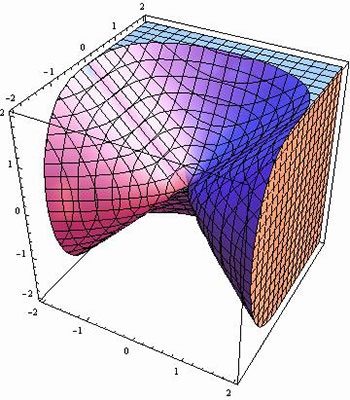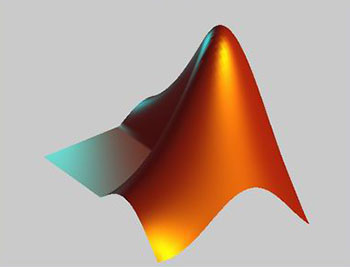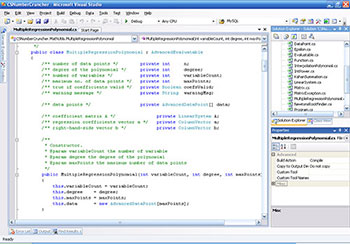Scientific Software
I don't know if pupils are still taught "long division" at school, but if you face a serious task, it's much easier to use a calculator. The programs below are sort of super-perfect programmable calculators: they are written to solve various inequalities, equations, transforms, operations with matrices... that is everything that takes days to solve on paper. This group of tests contains a lot of programs with long history. Some of them appeared when some people didn't even know that computers existed...
Mathematica is an absolutely new program for us, we've never used it before. It's a 64-bit version. This application is an auxiliary tool for mathematicians to perform analytic transformations and numerical computation (you can read the details in Wikipedia). There is a built-in benchmark in the application, but there also exists a respectable and time-proven external (third-party) benchmark. We use both. We noticed that the built-in benchmark is more sensitive to multi-core CPUs, while the external test uses only one core (one processor). We can assume that it has to do with different application functions used by these benchmarks.
It's another 32-bit system of computer algebra, which is traditionally popular among scientists rather than engineers (probably because it's designed for symbolic computing). It's a respectable application that has a long history. Its first version was released back in 1984. It does not have a built-in benchmark. However, we dug out an unofficial version of popular SciMark benchmark rewritten for the Maple language (original SciMark is presently available for ANSI C and Java). We did not notice efficient usage of several cores - total CPU usage in the quad-core system only sometimes rose to 30-35% (100% load of a single core amounts to 25% of the total CPU usage).
MATLAB is the name of the application itself and of its programming language. On the whole, we can say that it's more popular than the previous applications - this program is used not only in scientific and engineering computations, but also in manufacturing. It's a 64-bit version (the only program in our group of mathematical applications in our test procedure), and it can use multiple cores. However, we noticed that it cannot use multiprocessing in some functions of the built-in benchmark.
Professional bitmap image processing
This group of tests contains only one application, but it's no less representative than the other groups, because there is practically no alternative to Adobe Photoshop for professional bitmap image processing. This is not a monopoly. On the contrary, it's a result of severe competition, survival of the fittest. Some of you may remember the times when Adobe Photoshop could be compared with Corel Photo-Paint...
We haven't changed our test script for Photoshop (compared to the previous test procedure), only the application version is updated. Our script imitates user operations with the most popular functions of Adobe Photoshop (Blur, Color, Light, Rotate, Sharp, Resize, Transform) and some popular filters. The total score is calculated as the geometric mean of the time it takes to execute corresponding parts of the script. Judging by results of our previous tests, this test depends much on the number of processors (processor cores) in a system, although it does not use them completely in certain cases (it especially concerns complex filters).
Compiling
This group is also represented by a single software application, which is also very popular. Fans of another popular compiler (GCC) may be offended, of course :), but we would have been forced to use a different operating system for sterling tests with this compiler, and we think that installing a different operating system for the sake of a single test is too much...
Microsoft Visual Studio as well as Microsoft Visual C++, Microsoft Visual Basic, and Microsoft C# (they are part of this application) are de facto standard tools for Microsoft Windows application development. And this operating system is the most popular OS these days. That's why we have chosen this very application for our compiling test. And the source code is an authentic example of code written for this application. We use the 64-bit version of the application, 32-bit target compilation (because of peculiarities of the compiled code). However, this test can use multiprocessing features, although not always. Let's put it like this: they are used when Microsoft Visual Studio 2008 and its compiler can use them in the process of compiling a complex but standard project (from the point of view of MS Visual C++).
Web server
The main gripe of our users about the web server test is that Apache itself (without addons) is rarely used these days. We decided that our readers are right, so the new test procedure features a completely updated web server group of tests. It includes two benchmarks: one is a "pure" Apache + PHP couple, the other is a third party project - PHP Speed, which allows not only Apache + PHP, but also Apache + PHP + MySQL (popular opensource database). Nevertheless, according to our data, resources of multiprocessor (multicore) systems are better used by the first benchmark (Apache + PHP Calendar Benchmark), while the second test can mostly use one core only (judging by the CPU usage graph). However, we decided that our combination of the first and the second test gives an adequate picture of general tendencies, so their results are treated equally in the total score of this group.
Write a comment below. No registration needed!





